World of Tanks combat effectiveness is a measure of how useful a player is in battle. In principle, of course, this statistic is far from ideal, but it is this indicator that any clan takes into account before accepting a particular player into its ranks. Anyway combat effectiveness World of Tanks is much more optimal indicator than simply tracking a specific player's win percentage, however both statistics are still tracked today.
How to find out combat effectiveness?In fact, there is nothing difficult in determining your combat effectiveness. For this, there is a specialized combat effectiveness calculator that automatically determines this characteristic by reading your profile data. It is worth noting that this is carried out on the basis of six different factors.
How many tanks were destroyed?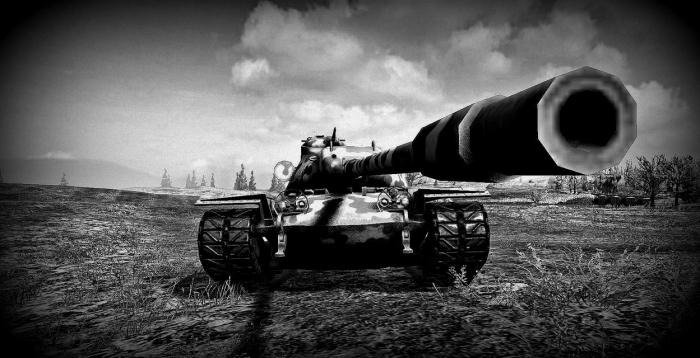
At this point, the combat effectiveness of World of Tanks takes into account approximately how many tanks you destroy on average during one battle. It is worth noting that this indicator is one of the most important, so it is best to destroy even small combat units. IN in this case It doesn’t matter whether you partially finished off the tank or destroyed it yourself; only the fact of delivering the final blow matters.
Number of damageThis point is considered the most significant, and it is on its basis that the combat effectiveness of World of Tanks is determined. This indicator characterizes your activity and accuracy, as it is determined based on the amount of damage inflicted. To keep this item stable high level, it’s quite enough to just shoot more accurately and damage your opponents.
How many enemies were discovered?This point directly depends on you and your effectiveness. Regardless of which tank you use most often, this item will still be taken into account by the calculator while determining the combat effectiveness of World of Tanks. Of course, you can skip it and do it altogether equal to zero, however, of course, it is better to at least periodically highlight enemy tanks. At the same time, if you understand the technology of spotting the enemy, you will be able to do this on heavy vehicles.
Capturing bases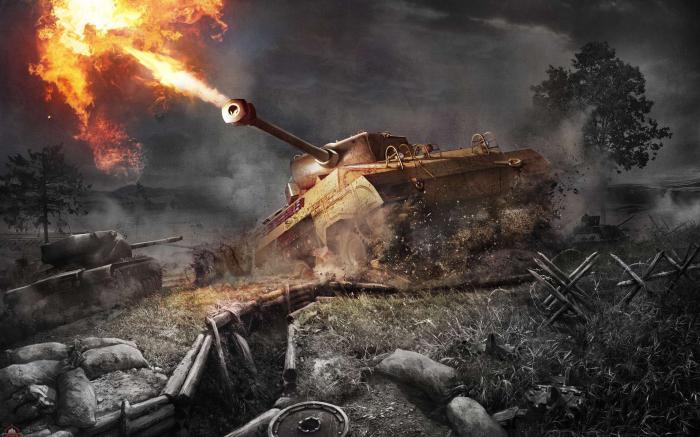
Among other things, WoT's combat effectiveness also includes points that you received in the process of capturing various bases. Despite the fact that this is the smallest point in its importance, it is also included in the combat effectiveness of any player. Try to disrupt enemy captures of your bases and attack enemy points more effectively. Considering that capturing bases brings a fairly large number of points, it is recommended to do it in any case.
Average experienceThis indicator has the smallest impact on your combat effectiveness, as it calculates the average amount of experience. This indicator is the least influential, since some users play with premium and some do not, but it still has a slight impact on the rating.
Keeping all the above points in mind will help you maximize your performance rating. You can calculate it using a specialized service that contains a calculator. Knowing the exact data, you will be able to start battles, clearly understanding how exactly you should act and which ones are best to raise your profile indicators to ensure the maximum high efficiency. And the simplest advice is to be careful, soberly assess the situation and shoot accurately, and then, no matter how bad your opponents are, your combat effectiveness will always be at its best.
Like any weapon, anti-ship missiles have their own strengths and weaknesses. Among the advantages of RCC, the following can be highlighted:
- Versatility in terms of purposes and media;
- High degree of readiness for combat;
- Application in difficult meteorological conditions;
- Long range and flight speed;
- Low visibility for electronic detection means;
- High accuracy and lethality.
Versatility in purposes and media:
By versatility we mean the possibility of using missiles from submarines and surface ships, airplanes and helicopters, as well as from coastal launch positions against targets of various types.
High degree readiness for battle:
High readiness for combat is technically ensured by storing a fully equipped missile in a transport and launch container or in a special capsule (a light, hermetic protective shell in the shape of a cylinder rounded at the ends) located in the torpedo tube. To launch, you only need to enter the firing parameters into the on-board computing device, which takes only a few seconds. Most RCCs have autonomous systems guidance, as a result of which the carrier does not need to take a strictly fixed position for attack. Often this position is in the return fire zone. The launch can be made from any heading angle (the angle between the diametrical (longitudinal) plane of the ship and the direction of the target), as long as the target is within the missile's reach. This also significantly reduces the preparation time for the start.
Application in difficult weather conditions:
Possibility of using missiles in dark time days and in difficult weather conditions - an important tactical property that helps ensure the surprise of the strike. The active radar homing heads of most anti-ship missiles are capable of operating at low altitudes, detecting targets in sea states above 6 points, in rain and fog.
Long range and flight speed:
The flight range of missiles equipped with small-sized engines with high specific thrust and minimal specific fuel consumption significantly exceeds the firing range of torpedoes and artillery shells. This factor gives a significant advantage to ships carrying anti-ship missiles and influences the tactics of naval forces.
Low visibility for electronic detection means:
The low visibility of the missile for electronic detection means is ensured thanks to the small EPR, which is large only at heading angles close to 90. At sharp launch points when the missile approaches the target at the moment of attack, the EPR has a minimal value. However, studies have shown that when the RCS of a missile is reduced by three orders of magnitude, its detection range decreases by no more than 80%. In this regard, in recent years the main focus is on increasing the complexity of the rocket's flight path. The latest anti-ship missiles provide for multiple changes in flight course, which allows several salvo missiles to approach the target from different directions.
High accuracy and damaging ability:
The high lethality of anti-ship missiles is ensured by the large mass and effectiveness of the penetrating warhead, which is detonated during interior spaces ship. An additional effect is created by the combustion of unspent fuel. In the future, the missiles may be equipped with volumetric explosion ammunition capable of destroying the hull of a ship such as a patrol ship or a destroyer within a radius of 90-130 m.
The disadvantages of RCC include:
- Subsonic flight speed;
- Vulnerability to ship defense systems;
- Insufficient selectivity and noise immunity of the seeker;
Subsonic flight speed:
The subsonic flight speed (0.7-0.95 M) of anti-ship missiles provides certain advantages to the defending side. With properly organized ship defense, it is possible to detect a missile flying at an altitude of 15 m. Above sea level, at a distance of 25-30 km. From the moment of detection, the flight time will be 80-100 s. This time is enough to prepare and repel a missile attack.
Vulnerability from ship defense systems:
Anti-ship missiles do not have any protection against rocket, cannon and machine gun weapons. As a result, after detection by the enemy, they are an easily vulnerable target. To defeat enemy ships with strong air defense, anti-ship missiles should be fired in one salvo. Single missile launches are advisable only against weakly guarded targets or for sinking ships that have already been hit but remain afloat.
Insufficient selectivity and noise immunity of the seeker:
Anti-ship missiles, despite complex and expensive guidance systems, still lack reliable selectivity and can attack false targets. The on-board equipment of the anti-ship missile system is not yet able to guarantee complete noise immunity.
A comparative analysis of the combat capabilities of anti-ship missiles shows that the shortcomings of this type of weapon are fully compensated by its advantages. It is thanks to this that they are widely introduced into the arsenal of naval weapons.
Participation in World Of Tanks tank battles is exciting, plunging you headlong into the atmosphere of heated battles. Over time, questions begin to arise:
- How do I know how well I'm playing?
- What numbers can tell about my achievements?
Then the time comes and the player learns about the existence of efficiency statistics, simultaneously studying formulas and ways to improve them.
How to find out efficiency in World of TanksYou need to enter your game nickname in the form below and the efficiency calculator will calculate everything for you!
| Number of fights: | |
| Number of tanks: | |
| Destroyed during the battle: | 0 |
| Damage per battle: | 0 |
| Discovered during the battle: | 0 |
| Base defense points per battle: | 0 |
| Base capture points per battle: | 0 |
| Average tank level: | 0 |
| Win percentage: | 0 |
| Efficiency Rating: | 0 |
Where:
- R is efficiency and it depends on six player parameters:
- K – average number of tanks destroyed;
- L – intermediate level player tank;
- D dmg – average damage dealt;
- S – average number of detected tanks;
- D def – average number of base defense points;
- C – average number of base capture points.
How does it work? User efficiency is remembered. Thus, you can monitor the dynamics of changes in the Efficiency Rating (ER). In order to see changes in RE, you need to play several battles and re-enter your nickname.
Change the efficiency plus or minus. The countdown starts from the last OM check:
It is also possible to view the entire history of changes in efficiency in the form of a graph:
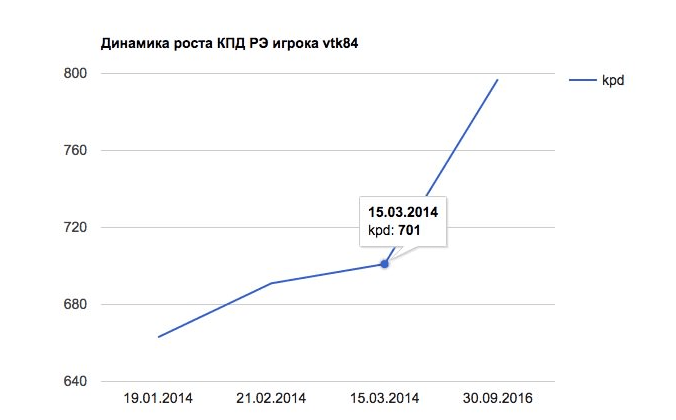
Useful information
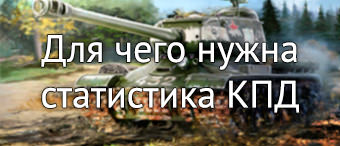
![]()
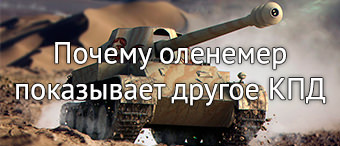
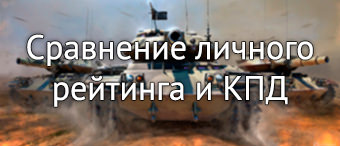
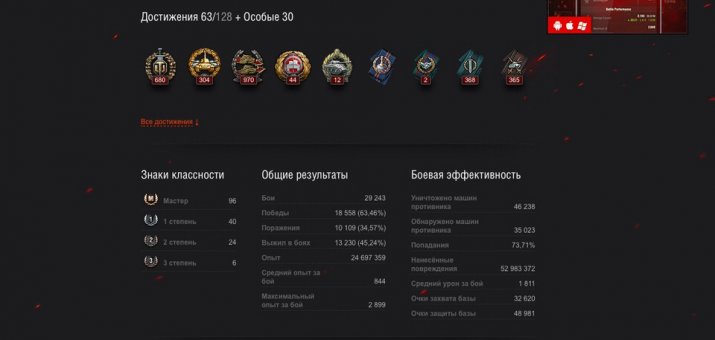
Calculate every time, add new data to the formula? - This is not required. In order to determine your efficiency, you need to enter your game nickname in the form (above), start the data download process and wait for the result. There they will explain to you in detail what and how you need to do to increase the value of this indicator. There are honest and not so honest ways. Although open cheating is punishable by a (permanent) ban.
There are many varieties of this program. The world of tanks efficiency calculator can show not only your coefficient, but also calculate how many battles are left before the required percentage of victories. And not victorious battles, but games in the style inherent to you. A look into the future or a funny named device.
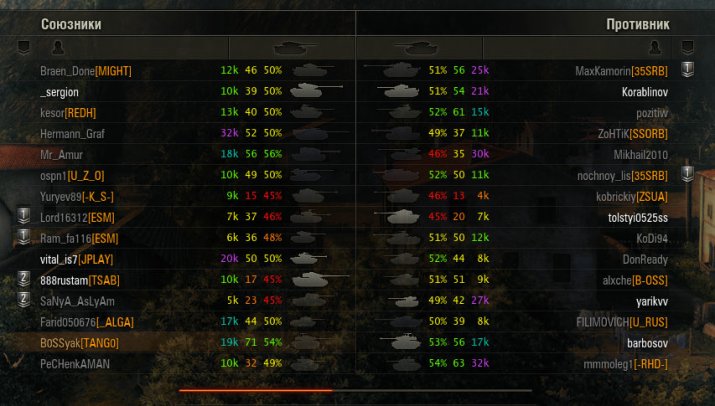
You always want to predict what the fight will be like. Who will be your opponent - a seasoned tank ace or a “green” player with stock equipment. To do this, you need to install a special mod “”, with which you can find out the efficiency without leaving the battle.
For those who have already played, the name “deer meter” speaks for itself. For the uninitiated, it should be explained that in the game “deer” are players who are not very successful. At the very beginning, when the loading table appears, several numbers appear next to each player. They show: the percentage of victories, the value of efficiency, the total number of battles fought. During the download, you can choose potential “victims” for yourself, and remember who you want to stay away from. General data on the chances of winning are also given based on the analysis of the players and comparison of the equipment participating in the battle.
Don’t get hung up on the numbers. I would like to point out right away that these indicators are relative. The efficiency of a world of tanks player may be artificially high. Or vice versa, it does not reflect the player’s real fighting qualities. How can this be? You can improve your coefficient well and bring zero benefit to the team (break into the enemy’s “rep”, “light up” everyone and die courageously). The allies did not have time to do anything at this time. The “heavies” had just begun to move into position, and the “art” had not even “reduced” to this square. The situation is the other way around. Huge benefit for the team in battle. He shot down the enemy's harp, restrained the advance of an entire group, preventing the enemy from deploying his battle formation. Transmitted the coordinates of the self-propelled guns. Based on the results of the battle - low efficiency. Chance of winning It happens that a team that has no chance of winning (data from the “reindeer meter”) wins in a matter of minutes. Sometimes the low numbers of the opposing team's players have a relaxing effect. Everyone understands that victory is in your pocket. And they safely lose. How to increase efficiency? Why not use some tricks to your advantage to raise your indicator and scare others with high data. Increasing factors Greatly increase the efficiency rating of points of shooting down and capturing a base. This means that this must be used in combat. Moreover, if you take on a heavy tank of level 8 or higher, this will greatly increase your efficiency. Reducing factors It is not recommended to use artillery:- No capture or shoot down points;
- Not very high damage numbers;
- Low level of technology.
MILITARY THOUGHT No. 1/2005, pp. 65-68
Combat properties and the effectiveness of weapons and military equipment
Retired ColonelL.S. BONIN ,
Doctor of Technical Sciences
DESPITE the wide variety of weapons and military equipment (WME) currently in service with the RF Armed Forces and in experimental development and differing in intended purpose(for causing damage to the enemy, transporting troops and cargo, covering troops, important facilities and infrastructure from enemy air strikes, etc.), according to the scope of combat operations (on land, at sea, in the air, in space), according to applicability (disposable, reusable, specialized, multifunctional), by depth of action, by type and weight and size characteristics of combat units - all of them have certain combat properties that are realized in the process of performing combat missions.
In military scientific research related to assessing the effectiveness of weapons and military equipment, their combat properties are quite widely used as generalized indicators of effectiveness. However, there is still no common understanding of the structure, content and methods for determining these indicators. Almost every researcher gives his own vision of the characteristics of the sample taken into account and the conditions of its functioning. Some consider it sufficient to take into account three combat properties (CPs) when assessing effectiveness: accuracy, power, applicability; others - four BS: firepower, survivability, range, maneuverability; third - five BS: combat power, survivability, reach, efficiency, applicability.
To justify necessary list combat properties, which could sufficiently fully characterize any sample of weapons and military equipment, let us turn to principles of military art, because in them the expression of the path is found practical application objective laws of war.
As you can see, a number of principles quite clearly determine the necessary combat properties of a sample of weapons and military equipment. Another part of the principles, such as surprise and maintaining combat effectiveness, is more complex connection with the combat properties of the samples. Obviously, to achieve surprise, a mobile weapon is required, which would simultaneously have the property of stealth before its use. At the same time, the secrecy of weapons and military equipment is component main combat property - survival. And the preservation of the combat effectiveness of a sample of weapons and military equipment under the unilateral influence of enemy weapons depends only on its survivability. In duel situations, maintaining combat effectiveness obviously depends on both the power of one’s own weapons and military equipment and its mobility.
|
Necessary combat properties of weapons and military equipment |
|
|
Mobility and high tempo of combat operations |
Mobility, combat power |
|
Suddenness |
Mobility, applicability |
|
Concentrating efforts at the decisive place and time to create superiority over the enemy in combat power |
|
|
Simultaneously defeating the enemy to the entire depth of his formation |
Mobility, combat power, applicability |
|
Preserving the combat effectiveness of your troops |
Vitality, mobility, combat power |
Modern views on the conduct of combat operations using conventional weapons have been put forward by necessary requirement to any promising combat weapon: the ability to operate effectively day and night in simple and difficult weather conditions, as well as in conditions of dust and smoke, radar (RL) and infrared (IR) interference in various physical, geographical and climatic conditions. All this made it necessary to take into account such a combat property of weapons and military equipment as “applicability”. Applicability is understood as the adaptability of a sample of weapons and military equipment to solving assigned combat missions at the required depth of action at any time of the day, in various physical-geographical, interference and meteorological conditions.
The destruction of the enemy and infrastructure to the required depth depends to a large extent on the range of weapons and military equipment. At the same time, disposable weapons and military equipment (for example, a rocket) have clearly defined minimum and maximum firing ranges. For reusable weapons and military equipment (for example, an aircraft), the range of action varies within a fairly wide range depending on many factors: combat (transport) load, fuel supply, in-flight refueling capabilities, flight profile and modes, launch range of weapons (for example , cruise missiles), etc.
Based on the concept of “combat property of a sample of weapons and military equipment,” which is proposed to be understood as a stable generalized feature characterizing the ability of a sample to effectively perform certain combat functions in accordance with its purpose, include the range of action (reach) to BS, apparently, would not be entirely correct. It is advisable to consider it as a particular indicator of the BS “applicability”, characterizing the degree of overlap of the field of action objects.
Thus, the four combat properties are: combat power, mobility, applicability And survivability- are necessary and sufficient to reveal the functional essence of a sample of weapons and military equipment and completely determine its combat effectiveness, i.e. degree of adaptability of weapons and military equipment to perform combat missions in different conditions combat situation.
In addition to the specified combat properties, samples of weapons and military equipment must have the following qualities: reliability, ease of use and mastery, possibility of production in peacetime and wartime, and a number of others. Each of these qualities, to one degree or another, affects the combat effectiveness of a model of weapons and military equipment, but not independently, but through a change in the necessary combat properties: combat power, mobility, survivability, applicability.
It is known that one of the necessary prerequisites for achieving the goal of any operation (combat) is the implementation of the principles of military art simultaneously and with maximum completeness. Therefore, each model of weapons and military equipment used in combat must simultaneously possess all combat properties in an optimal ratio between them, ensuring its maximum effectiveness. Neglecting any of the properties or increasing one property at the expense of others will ultimately not allow the full implementation of the combat capabilities of weapons and military equipment.
The history of the development of weapons knows examples of the creation of weapon models in which the main combat properties were optimally correlated. In particular, the T-34 tank during the Great Patriotic War simultaneously embodied the maximum possible combat properties at that level of development of science and industry: power, mobility and survivability. Designer of artillery weapons V.G. Grabin described the development of the concept of this tank as follows: “The design bureau identified three main characteristics of the tank: the first and main one is high firepower, i.e. powerful cannon armament; the second is the high speed and cross-country ability of a tracked tank; the third is reliable armor protection.”
The development of the Il-2 aircraft followed approximately the same path. Further attempts to increase its power by increasing its combat load reduced its mobility and survivability, and increasing its survivability by increasing its armor reduced its mobility and combat power. All this suggests that if in a weapon sample it was possible to achieve an optimal balance between combat properties, then the desire to improve one of the properties will lead to an imbalance of the entire system and a decrease in its effectiveness.
Summarizing the various connections of the main BS of weapons and military equipment, it can be argued that the manifestation of these connections depends both on the properties themselves and on the external conditions of the sample’s functioning, which in turn are determined by the combat power, mobility, survivability and applicability of the enemy’s weapons.
Combat properties are generalized indicators of the effectiveness of weapons and military equipment and occupy a middle position in the hierarchy of the system of indicators. At a higher level, the BS indicators are transformed (collapsed) into integral indicators, which are the combat potential or combat capabilities of the sample, and at the lower level, the BS represent a convolution of a number of partial indicators, the values of which directly depend on the tactical and technical characteristics (TTC) of the weapons and military equipment samples .
Weapons and military equipment are developing in such a way that the emergence of new means of armed struggle each time causes the development of corresponding countermeasures. The emergence and development of counter-measures has the main goal of reducing the effectiveness of the use of new weapons. The extent to which this is possible depends both on the resistance of the main weapon systems to counteraction, and on the technical and economic capabilities of creating the countermeasures themselves.
When creating each new type of weapons and military equipment, be it a means of attack or a means of defense, it is necessary to ensure that its effectiveness is maintained over time. Therefore, of all possible technical solutions when creating a new type of weapons and military equipment, those that are most difficult to counter with means and methods of reducing efficiency should be used. This is the first principle of weapons development, which can be called the principle of stability of a sample of weapons and military equipment over time.
Armed struggle is waged by opponents with decisive goals, which necessitates the creation of weapons that would correspond to the decisive nature of the war. Therefore, when creating promising weapons and military equipment, all achievements of science and technology must be used to ensure the highest possible level of combat power, mobility, survivability and applicability. This provision can be accepted as the second principle for the development of weapons and military equipment.
The third principle is the principle of mass, the essence of which is that even very effective conventional weapons in relatively small quantities cannot significantly influence the course and outcome of the armed struggle.
The fourth principle of development of weapons and military equipment is associated with the implementation of the well-known criterion “efficiency - cost”. It involves either achieving the maximum possible efficiency of a model of arms and military equipment at a given cost of the project, or creating a model of arms and military equipment with the required effectiveness of combat use, subject to minimizing its cost. It should be noted that when complex indicators are used in research, the question of the correctness (accuracy) of calculating partial indicators (efficiency, cost) arises with particular urgency, since the correct choice of a rational solution depends on this.
Consideration of combat properties as generalized indicators of the effectiveness of weapons and military equipment will improve the quality of comparative assessments of the effectiveness of weapons and military equipment (including those with foreign analogues); justification of the appearance of promising weapons and military equipment and ways to modernize the weapons and military equipment currently in service; feasibility study of the feasibility of developing (modernizing) weapons and military equipment.
To comment you must register on the site.
COMBAT EFFICIENCY is the most important general characteristic of weapons and military equipment, assessing the degree to which weapons and military equipment correspond to their functional purpose and the goals set during its creation.
Objective “comparison criteria” play a primary role in assessing the merits and demerits of military products. Their timely use at the “layout” stage of the TTZ for the development of military equipment for its own needs, as well as for export, it must ensure coordination of the combat capabilities of new and promising models with the goals of improving its own armed forces and the armed forces of importing states, as well as with the economic requirements and restrictions of the state.
Ideally, only weapons and military equipment that satisfy, within their limits, have the right to exist in the armed forces system life cycle» criterion “efficiency-time-cost”. Its essence lies in the fact that the “contribution” of any sample to the damage inflicted on the enemy (or prevented on oneself) is not only tactically, but also economically justified. This is one of the dominant features of preparing the armed forces for a modern conventional (non-nuclear) war.
In conditions of real resource and financial restrictions, when choosing and justifying the type of weapons and military equipment, it is necessary to predict the “price” of sales, first of all, of the “key” characteristics of the samples, evaluate their achievability in time, be able to evaluate the “contribution” of each of them to the combat potential of the samples.
In an expanded analysis of the military merits of new and promising weapons and military equipment, three groups of indicators are used - efficiency, cost, and operational capabilities.
Performance indicators take precedence over other indicators, but at the same time do not ignore them. The basis for determining the numerical values of these indicators, as a rule, is the process of modeling combat operations of weapons and military equipment in typical situations.
The “time factor” has an important influence on the effectiveness, especially of complex multifunctional weapons. Combat aviation systems (AK) are becoming obsolete most intensively “morally”, which is due to specific features the physical and operational environment of their “habitat” and application. For example, in air environment there are no natural shelters, active counteraction to aviation from not only air, but also all types of ground fire weapons, a high lack of time to control the AK in extreme conditions flight and combat use.
With increasing delays in the adoption of new AKs in the conditions of continuous improvement by the potential enemy of military and site air defense, electronic warfare, communications and command and control of troops and weapons, the combat effectiveness (combat potential) of new front-line AKs will intensively decrease.
When the combat effectiveness of troops (naval forces) is assessed, the concept of combat effectiveness extends to combat and logistics support facilities. Then, combat effectiveness is understood as an additional gain - an increase in the efficiency indicators of combat assets or troops (naval forces) through the use of combat and logistics support means.
The most widespread are private indicators of combat effectiveness, such as the probability of completing a combat mission when it comes to the actions of troops (naval forces); the probability of hitting a typical target, if we are talking about a means of hitting it; the average value (mathematical expectation) of the number of completed tasks, targets hit, area affected (for weapons of mass destruction), etc.
Indicators of combat effectiveness are set in the technical specifications for the development of combat weapons and are the basis for their design, are specified during testing and are part of the main tactical and technical characteristics (TTX) of models accepted for service.




